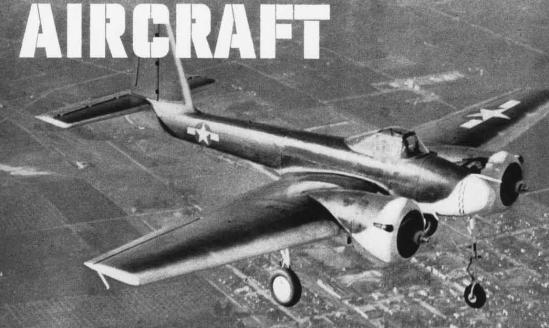Interstate BQ-4/TDR
As early as August 1936, Lt Cdr D.S. Fahrney of the U.S. Navy suggested the development of unmanned remotely-controlled aircraft for use in combat. A low-priority program to develop these aircraft, called "assault drones" at that time, was begun, but progress was slow because necessary technology was simply non-existing. However, around 1940 two new key components were ready for testing, the radar altimeter (to prevent the drone from flying into terrain) and television (to make guidance from a stand-off distance possible). In 1941, converted manned aircraft were flown under remote control, where the operator in the control plane no longer needed to keep visual contact with the drone but could instead watch a TV screen with an image from a drone-mounted camera. In April 1942, a TV-controlled drone was successfully guided into a target ship from a control aircraft 50 km (30 miles) away. In the same month, the U.S. Navy ordered two XTDR-1 assault drone prototypes and 100 TDR-1 production machines from Interstate. Shortly before, the Naval Aircraft Factory had also received an order for 100 production examples of the very similar TDN-1.
 |
| Photo: U.S. Navy |
| TDR-1 |
The TDR-1 was a simple aircraft powered by two Lycoming O-435-2 piston engines. The TDR-1 used low-performance engines and relatively few strategic materials, so it didn't interfere with wartime aircraft production. The TDR-1 had a very simple cockpit which was manned by a backup pilot for test flights. The pilot would only take over the controls when the remote control equipment failed or when the aircraft was landed. In unmanned operational missions, the cockpit canopy was replaced by a flush fairing, and the landing gear was dropped after take-off. The TDR-1 could be armed with either a torpedo or a 900 kg (2000 lb) bomb.
 |
| Photo: via STAG ONE Website |
| TDR-1 |
At one time in March 1943, the Navy had plans to order up to 2000 assault drones, but program delays caused by technical problems and the low priority meant that this number was soon drastically reduced to about 300. In 1944, a single unit with TDR-1 drones and converted TBM-1 Avenger control planes was deployed in the Pacific. In September and October that year, 46 TDR-1 drones were expended, of which 18 scored hits on the target. However, the Navy's assault program had already been terminated shortly before these operational missions, mainly because of delays, mediocre test results, and the success of conventional weapons in the Pacific war. A total of 189 TDR-1s had been built.
Between April and December 1943, the U.S. Army Air Force borrowed a single TDR-1 from the Navy and tested it as the XBQ-4. However, the USAAF was apparently not impressed and didn't order more of these drones.
 |
| Photo: National Archives |
| XBQ-4 |
The TD2R was to be a variant of the TDR with two Franklin O-805-2 engines of 335 kW (450 hp) each. However, two XTD2R-1 prototypes were cancelled and completed as XTD3R-1 (q.v.). The USAAF reserved the designation XBQ-5 for the XTD2R-1, but didn't procure one, either.
Last of the TDR variants was the TD3R, which was powered by two Wright R-975-13 engines of 333 kW (450 hp) each. Three XTD3R-1 and one XTD3R-2 were built, but a batch of 40 TD3R-1 production drones was cancelled. The USAAF allocated the designations XBQ-6 for prototypes and BQ-6A for production machines, but did not procure any BQ-6 aircraft before the whole program was cancelled in 1944.
 |
| Photo: Naval Aviation News |
| XTD3R-1/2 (exact model unknown) |
Specifications
Note: Data given by several sources show slight variations. Figures given below may therefore be inaccurate!
Data for TDR-1/XBQ-4:
| Wingspan | 14.6 m (48 ft) |
| Weight | 2700 kg (5900 lb) |
| Speed | 225 km/h (140 mph) |
| Range | 685 km (425 miles) |
| Propulsion | 2x Lycoming O-435-2 piston engine; 163 kW (220 hp) each |
| Warhead | 900 kg (2000 lb) general-purpose bomb or torpedo |
Main Sources
[1] Kenneth P.Werrell: "The Evolution of the Cruise Missile", Air University Press, 1985
[2] Norman Friedman: "US Naval Weapons", Conway Maritime Press, 1983
[3] Bill Gunston: "The Illustrated Encyclopedia of Rockets and Missiles", Salamander Books Ltd, 1979
[4] John M. Andrade: "U.S. Military Aircraft Designations and Serials, 1909 to 1979", Midland Counties, 1979
[5] US Army Air Forces: "Army Aircraft Model Designations", 1946
Back to Directory of U.S. Military Rockets and Missiles, Appendix 1
Last Updated: 4 January 2005